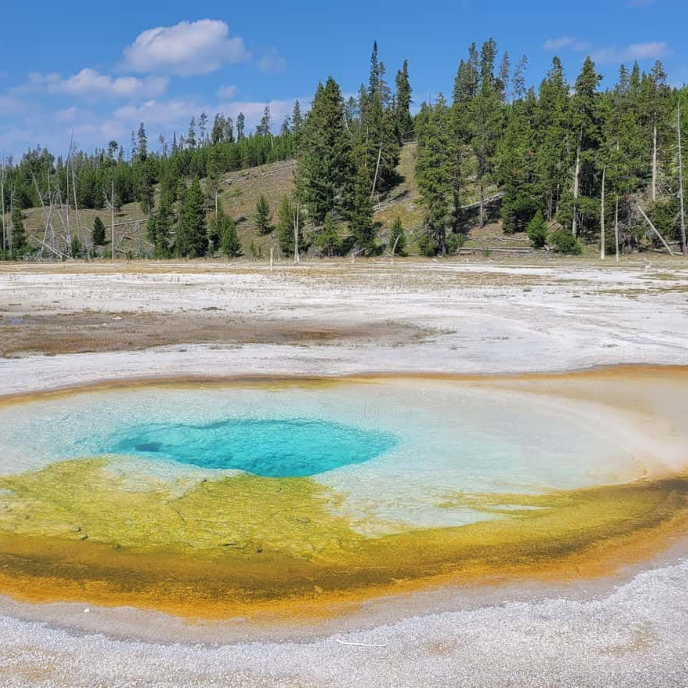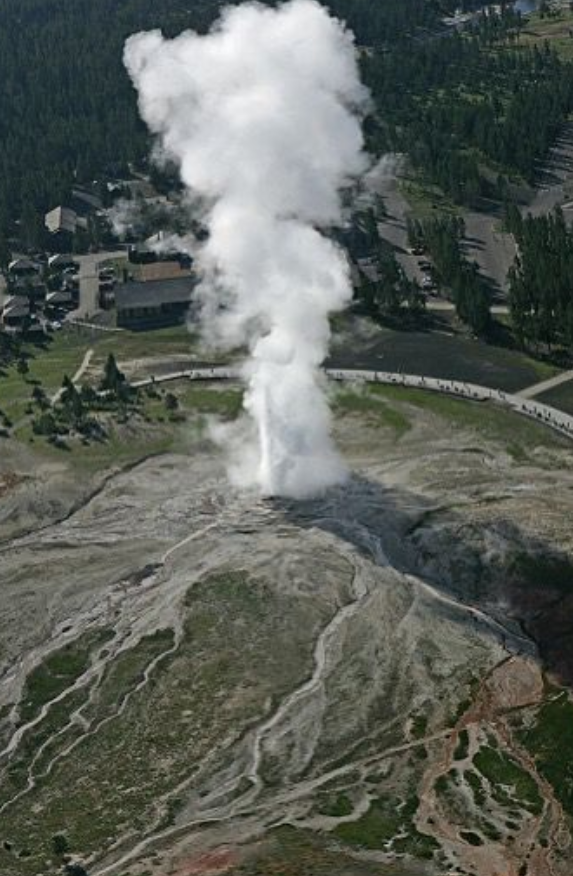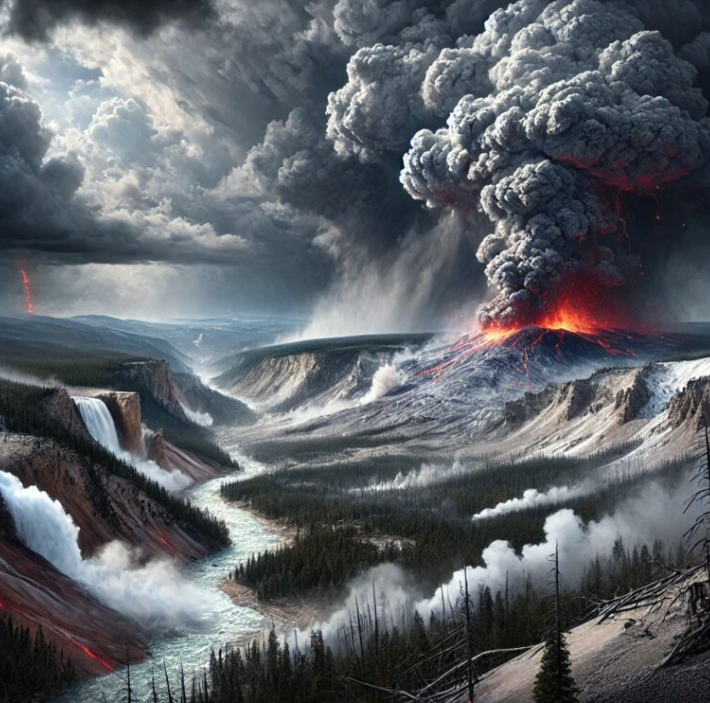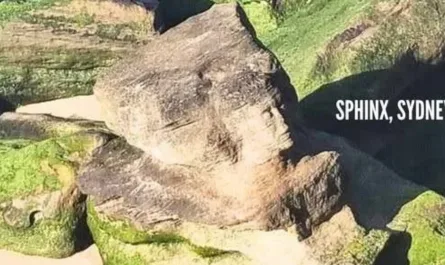Beneath the stunning landscapes of Yellowstone National Park lies a sleeping giant: the Yellowstone Caldera, a massive 30-by-45-mile volcanic crater formed by a colossal eruption 640,000 years ago. This active supervolcano powers the park’s iconic geysers, hot springs, and steaming pools, but its potential for destruction has sparked fascination and fear. Could it really wipe out life as we know it? Let’s dive into the science, history, and current state of this geological behemoth.
What Happens If It Erupts?
A supereruption from Yellowstone would be catastrophic. Imagine ash clouds so dense they block sunlight, plunging the planet into a “volcanic winter.” Global temperatures could drop 3–5°C for years, crippling agriculture and air quality, according to USGS models. Closer to the park, the devastation would be immediate: lava flows, ash blankets, and pyroclastic flows—superheated gas and rock racing at 450 mph—could obliterate everything within dozens of miles. The 1980 Mount St. Helens eruption, a minor blip by comparison, unleashed 24 megatons of energy; Yellowstone’s past blasts released up to 2,500 times that.

But there’s a twist. A 2024 study in Journal of Volcanology and Geothermal Research suggests future eruptions might not be a single, world-ending explosion. Instead, smaller, phased eruptions—likely in the northeast caldera—could spread out the impact, potentially lessening the immediate chaos. Still, even a “smaller” eruption would be no picnic.
A Fiery Past
Yellowstone’s supervolcano has erupted three times: 2.08 million, 1.3 million, and 640,000 years ago. Each event reshaped North America, spreading ash as far as Mexico and creating the region’s fertile soils. The most recent, the Lava Creek Tuff eruption, left the massive caldera we see today. Smaller eruptions and lava flows have occurred since, with the last activity around 70,000 years ago. These events remind us of Yellowstone’s power, but they’re also a clue to its unpredictability.
Is It “Overdue”?
You’ve probably heard claims that Yellowstone is “overdue” for an eruption. Not quite. Volcanoes don’t run on a schedule. While the average gap between its major eruptions is about 700,000 years, geological cycles are far from precise. The next supereruption could be thousands, millions, or even never. The Yellowstone Volcano Observatory (YVO) says there’s no sign of magma movement signaling an imminent blast. The odds of a supereruption in our lifetime? A slim 1 in 730,000, per USGS estimates.
What’s Happening Now?
As of May 29, 2025, Yellowstone is calm. The YVO monitors the caldera with seismometers, GPS, and satellite imagery, detecting ground changes as small as millimeters. The park sees 1,000–3,000 small earthquakes annually, mostly under magnitude 2, and minor ground uplift (1–2 cm/year near Norris Geyser Basin)—all normal for an active volcanic system. Occasional hydrothermal explosions, like those in 1989 or 2024 at Biscuit Basin, happen but aren’t tied to supereruptions. Despite sensational X posts claiming “Yellowstone is waking up,” the YVO confirms no unusual activity.

Why the Hype?
The supervolcano’s raw power captures imaginations. Social media, especially X, often amplifies fears with exaggerated claims about quakes or steam. But scientists urge sticking to verified data. Advanced monitoring ensures we’d have warning signs—significant ground swelling or seismic spikes—long before a major eruption. For now, those signs are absent.

Should You Worry?
Yellowstone’s supervolcano is a geological marvel, not an imminent doomsday device. While its potential is staggering, the likelihood of a supereruption soon is minuscule. Smaller volcanic or hydrothermal events are more probable but far less destructive. So, keep hiking Yellowstone’s trails, marvel at its geysers, and trust the scientists keeping watch. Nature might have a fiery side, but it’s not throwing a curveball just yet.

Stay curious, stay informed, and let’s hope Earth keeps its cool.


